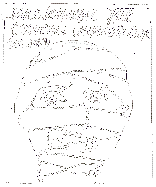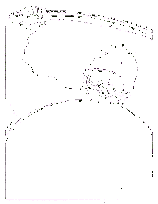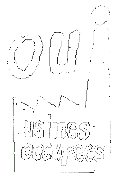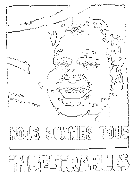|
 |
DEMAND
THE IMPOSSIBLE! Posters From The 1968 Paris Uprising Written by Mark Vallen, May 2001 © |
|
The posters of the Paris 1968 uprising comprise some of the most brilliant graphic works ever to have been associated with a social movement. Politics aside, from a design standpoint they are second to none. The artworks were not superfluous decorations meant to beautify office walls - instead they took center stage on the streets in provoking awareness and action. Amazingly enough, the posters were all anonymous creations, the result of collaborations between idealistic students and striking workers. To this day not a single artist has been credited for the provocative artworks. In the Paris of 68, pent-up frustration over poverty, unemployment, the conservative government of Charles de Gaulle, and opposition to the Vietnam war, gave rise to a mass movement for sweeping social change. In the month of May, workers and students took to the streets in an unprecedented wave of strikes, walkouts and demonstrations. By May 18th, 10 million workers were on strike and all factories and universities were occupied. During those days of turmoil the Atelier Populare (Popular Workshop) was formed. The faculty and student body of Paris' main art school, the Ecole des Beaux Arts, were on strike, and a number of the students met spontaneously in the printmaking department to produce the very first street posters of the revolt. |
|
On May 16th, art students, painters from outside the university, and striking workers decided to permanently occupy the art school in order to produce posters that would "Give concrete support to the great movement of the workers on strike who are occupying their factories in defiance of the Gaullist government." The posters of the Atelier Populare were designed and printed anonymously and were distributed for free. They were seen on barricades, carried in demonstrations, and were plastered on walls all over France. Their bold and confrontational messages were extremely influential and still resonate in our own time. The handful of brilliant poster designs presented here embody the very essence of activist art, and represent just a fraction of the enormous output of the Popular Workshop. |
|
The poetic title of this poster is La Beauté Est Dans La Rue (Beauty Is in the Street). The poster is a declaration that beauty will not be found in the bourgeois palaces of culture, but in the struggle to create a new society. The image depicts a street fighter in a trench coat hurling a cobblestone at riot police, but the artwork also alludes to a popular slogan and graffiti of the day - "sous les pavés, la plage" (under the paving stones, the beach). |
 |
|
|
This
poster titled, Light Wages- Heavy Tanks, quipped that the
workers slave to create the weapons that will ultimately be used
against them. A primary demand of the striking workers was equitable
pay, but many worried about the very nature of work under capitalism.
A great part of the Paris uprising was a rebellion against the
trap of "alienated labor," and the student movement especially
contributed to the notion that work must be something more than
mere drudgery carried out for a miserable paycheck.
|
|
The caption announces that this is a portrait of A Youth Disturbed Too Often By The Future. This is perhaps the most famous Paris 68 poster. Here we see a person's head completely covered in bandages. We can't ascertain the victim's race or gender, but we can plainly see that they have been brutalized. The eyes are whirlpools of pain and anguish, over the mouth is placed a large safety pin. What does this image tell us? Is it merely the image of a person abused by the authorities, or is it a prophesy of collective retreat into apathy and cowardice? Is the safety pin there to hold the bandages in place, or was it placed there to hold the person's tongue in place? Whatever the interpretation, the image continues to resonate in our times. |
 |
 |
When the French riot police attacked the occupied universities and workplaces, the rebellion turned violent. The initial police onslaughts were so heavy handed that many joined the strikers in order to protest police brutality. The poster at left was the artistic response to the savage police assaults, and the chilling untitled image appeared on city walls all over Paris. |
|
The heart of the worker's struggle was brilliantly conveyed by this image. The poster calls for a militant plan of action in opposition to corporate control, and exhorts workers to seize their workplaces with the slogan, Yes To Occupied Factories! Here a factory building has been cleverly reduced to an immediately recognizable abstraction, the factory's chimney serving as the third letter in the word "yes". A companion poster exists that shows a bosses cigar as the smoking chimney. That poster, emblazoned with the word "no," is a clear rejection of a workplace not under direct worker's control. |
 |
|
|
Workers
and students viewed with suspicion the minor concessions and compromises
granted by the conservative government. Such reforms were seen
as an attempt to buy off the uncommitted, and those who entered
into talks with the conservative government were viewed as "class
collaborationist" traitors ready to sell out the strikers for
personal gain. This poster titled, Reforms - Chloroform,
warns the viewer not to accept reforms meant to weaken the people's
movement.
|
|
This poster titled, Return to Normal, describes the twin diseases of complacency and apathy. Since it was widely felt by striking students and workers that their paralyzing strikes should continue until the conservative government fell, this image mocked those who sought a quick end to the strikes and a restoration of "business as usual." Like many of the best Paris '68 posters, the message resonates in the present and continues to comment on those who refuse to participate in anything except consumerism. |
 |
 |
Daniel
Cohn-Bendit was a radical young leader in the Paris revolt. His
provocative ideas and proclamations struck a chord amongst the
young. Bendit was denounced by the conservative press as a "Jew,
a German, and an undesirable." People were stunned by the apparent
anti-Semitism of the attacks upon Cohn-Bendit, and the immediate
artistic response was this poster. Soon there were millions in
the streets chanting the slogan found on the poster - "We
Are All Undesirables!"
|
|
The violent repression launched by the government turned the streets of Paris into a raging battleground. Students and workers responded to police raids by tearing up cobblestone streets and building barricades to keep the authorities out of "liberated areas." Large parts of Paris fell under the temporary control of striking students and workers. Huge street battles ensued between police and the citizenry for control of the zones. This poster titled, Order Reigns, informed the public that the state was restoring order by breaking the bones of students and workers. |
 |
 |
Bleak
humor often found its way into the posters of Paris 68. In this
example titled No To The Bureaucracy, a pyramid of spectacle
wearing bureaucrats becomes the symbol of everything that is wrong
in modern society. Not only is the mass composed of those who
have lost their individuality, they are ranked in a hierarchy
of power.
|
|
The title of this poster is Free Press. The simplicity, directness, and clarity of mind displayed in the Paris '68 posters often can take one's breath away. While this poster's visual style is primitive at best, its message is extremely sophisticated. On one hand the poster conveys the idea that the press is controlled by the police, the authorities, the state, and nothing but the police version of reality rolls off the newspaper presses. On the other hand, the poster is telling us that a truly free press squashes police state lies and government fabrications. |
 |
|
www.art-for-a-change.com is owned and operated by Mark Vallen © All text by Mark Vallen The primary source for my essay was, "Atelier Populaire © 1969 by Usine-Universite-Union." This was a soft-cover book produced by the Atelier Populaire and published by Dobson Books Ltd of London in 1969. Compiling almost 200 silkscreen posters and associated diatribes into a large format book (11 inches x 16 inches), the images were printed one to a page, with poster captions printed in English, French, Spanish, and German. The Atelier Populaire collective published the book with the intent, not of making a profit, but of spreading their revolutionary ideas. The artworks and direct quotes from the Popular Workshop found in my article were taken from the book. |




